Expert's Rating
Pros
- Fantastically designed cities and worlds
- Very well implemented spaceship construction
- Deep RPG mechanics with lots of freedom
- Lots of opportunities to play roles – spy, smuggler, trader,
- Mining magnate, space pirate
- Enormous variety in the setting
- Intuitive base building, both for machines and exteriors and interiors
Cons
- More restricted than No Man’s Sky – we travel fast and can’t just fly to a planet
- Planets are self-contained systems, not a connected mega-open world
- Many planets are barren and empty – they only make sense when we build mining facilities there
- Occasional glitches, but overall very few bugs for the size of the game
Our Verdict
Bethesda has finally landed another hit. Starfield is the space RPG epic we’ve been wanting for so long. It has the incredible expansiveness and variance in design of No Man’s Sky mixed with the dialogue depth and creative quests of Fallout or even Mass Effect. The only thing that might bother some people is the heavy reliance on fast travel and that many planets only make sense when you build bases and production facilities there.
Bethesda took its time, and rightly so: Starfield is currently the hottest Game of the Year candidate in 2023.
There it is again: that Bethesda feeling. Starfield (available via Steam and Xbox Game Pass) is exactly what so many have been wishing for: A guided, staged open-world designed with an enormous amount of love. Set in the future, but feeling real: We walk through our spaceship, look at the airlocks and think — okay, they could be from NASA.
It’s a sci-fi world, and one that feels believable, where every system interlocks in a fascinating way.
Xbox chief Phil Spencer said at Gamescom, “I’ve spent hundreds of hours in Starfield, and it’s maybe a little more Oblivion, less Skyrim.” And he’s right, because Starfield isn’t meant to be an open-world game where we can run around endlessly or jump via jetpack, but each planet has a certain structure and is coherently designed.
Further reading: Xbox Game Pass Ultimate tip: Get 2 years of access for dirt cheap
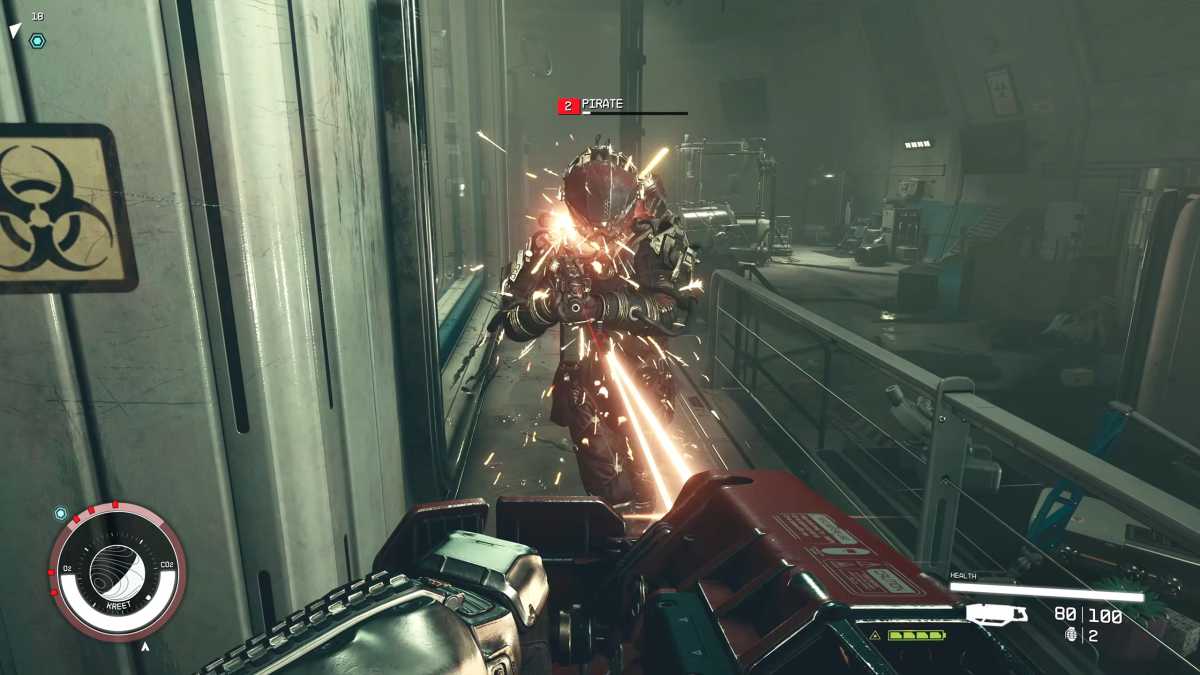
Starfield is definitely the classiest Bethesda RPG: in terms of the quality of the 4K textures and animations, it’s definitely on par with a Call of Duty: Modern Warfare 2.
IDG
It takes the best elements from No Man’s Sky, Mass Effect and Fallout and builds a gigantic space RPG epic out of them, in which there are a seemingly endless number of stories: Family dramas, famines, farmers threatened by space pirates, alien invasions, drug empires, cartel wars and, and, and…
And all of it is elegantly written and, above all, has hardly any bugs. A Bethesda game that launches almost bug-free — nobody would have actually believed that could happen.
However, the design decisions will not make everyone happy. Starfield is designed as a story epic, with hundreds of quests. If you follow them, you’ll constantly come across damn cool locations — for example, a mining colony where there’s always a red smoke in the air, like in Blade Runner 2049 over San Francisco. But it’s not built so much for wandering around. At some point the world just stops.
Some people will be bothered by this, while others enjoy the enormous variety. There are ice planets where it’s damn cold, requiring special suits; volcanic planets; desert steppes; planets with red dust particles; Endor-style tropical planets; those reminiscent of Avatar; and others with constant rain. Some have a poisonous atmosphere, others etch your helmet.
Building your mining empire alone is hundreds of hours of fun
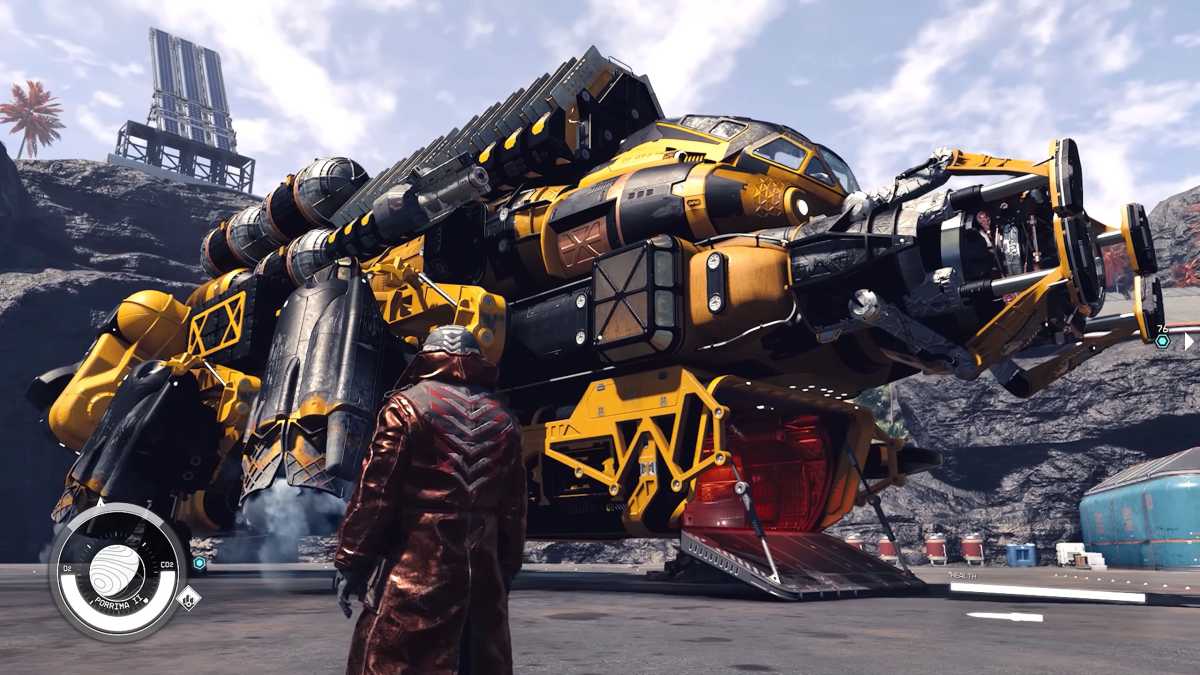
Our ships are our babies – it’s fascinating how much time we invest in tuning, designing and optimizing our fleet. It’s like in The Fast & Furious or Need for Speed, where everyone wants the most stylish spaceship.
IDG
There’s an incredible amount to discover: underground laboratories, research stations that investigate toxic acid pools, pirate bases, smuggler hideouts, countless exotic animal species. It’s just not Skyrim. It’s not a continuous open-world, but a whole solar system that is repeatedly interrupted by hypersonic jumps.
This makes systemic sense because Bethesda wants to avoid idle time and it makes Starfield feel much better than many open-worlds that run endlessly but seem empty. And yes, you’re also allowed to build our own bases later on, staff them with engineers, security, and robots and thus build up a veritable economic empire, which makes for long-term gameplay fun.
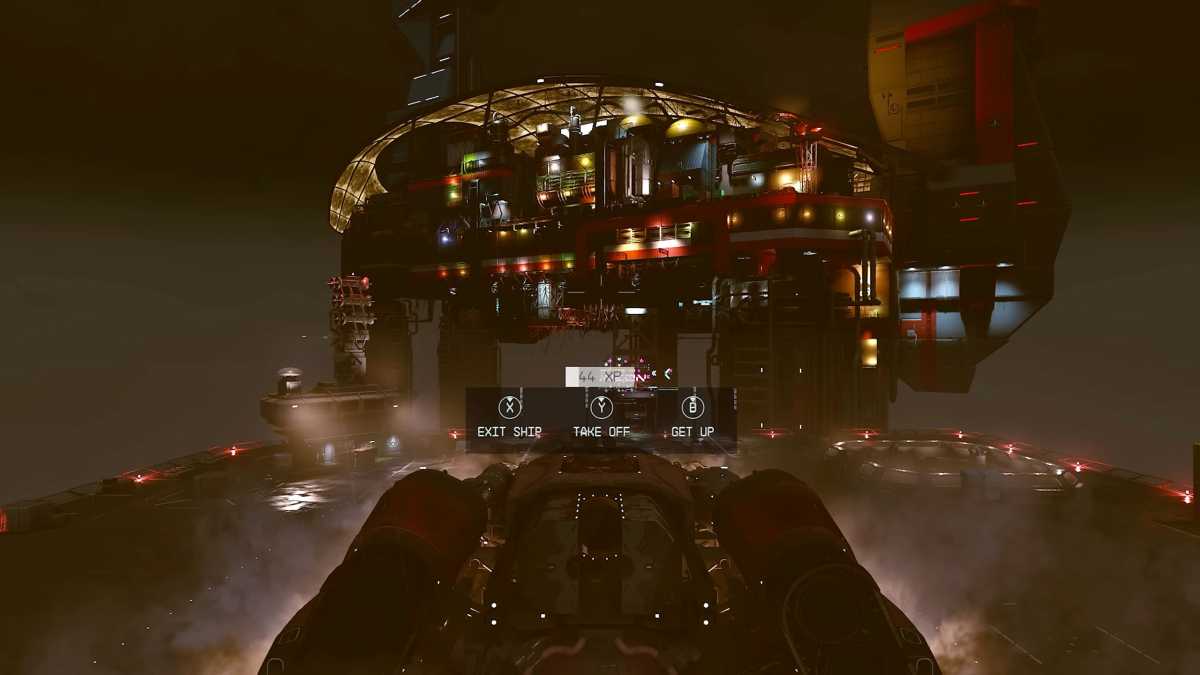
Starfield is a real role-playing game – it lets us “play roles”: If you want to become an industrial magnate with your own bases, mines and production facilities on distant planets, you’ll be given a huge base-building editor that exceeds that of Fallout 4.
IDG
There are hundreds of machines that require generators powered by solar farms to turn raw resources into end products that you can sell. You can also furnish the living capsules Sims-style and give your colleagues a bit of a feel-good atmosphere.
Unfortunately, there are no vehicles. We would have liked to have a buggy like the Mako from Mass Effect, but they will probably come via DLC. Instead, really huge bases can be built with complex goods cycles. The whole thing can also be protected with Gatling towers, which, however, also need energy — and the enemy knows that and attacks there specifically.
No open world, but fantastically designed planets
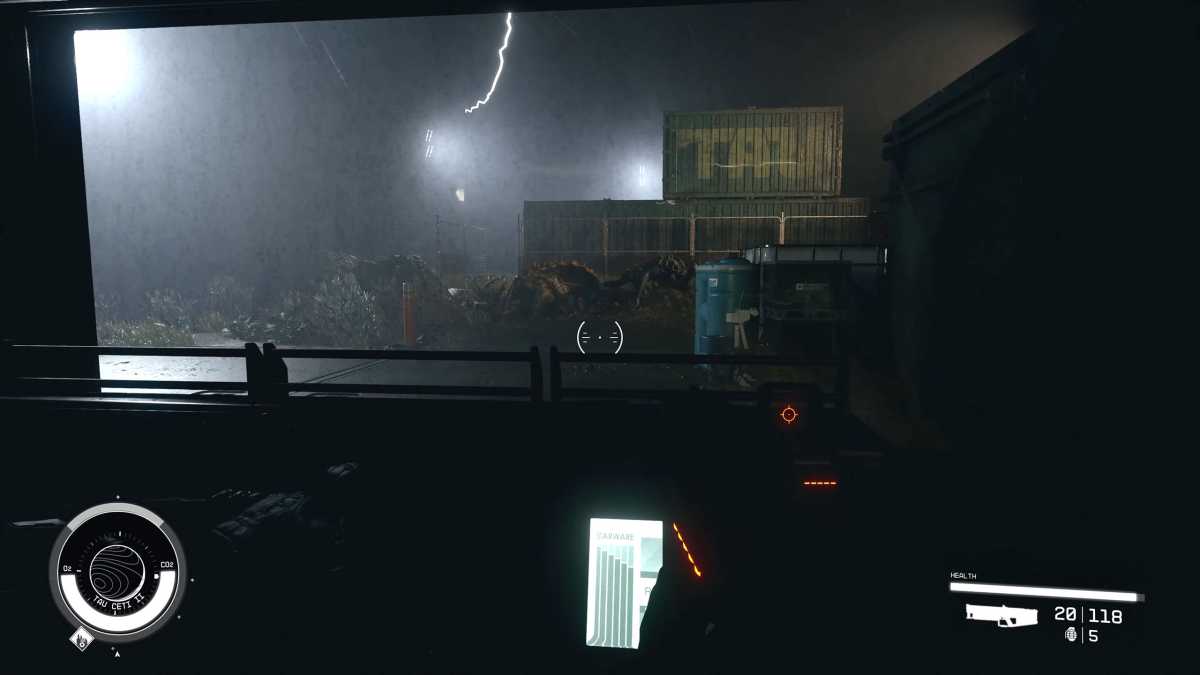
Because Starfield is not a continuous open world, but is spread over many, many planets, it is somewhat more structured in design than, for example, Skyrim. For example, quests lead us to remote systems where we fight against aggressive aliens as a marine of the United Colonies.
IDG
There are many beautiful worlds out there: The Witcher 3, Cyberpunk 2077 or, of course, Red Dead Redemption 2. They are open-worlds, but they are self-contained — they don’t let us break out of their corset. Rockstar Games did create a perfect Western world, where we ride where we want, but in the end you can’t try out much. You can’t be a sheriff, or a merchant, or own a gold mine — you’re only ever the bandit cowboy. Starfield is different. It tells us: hey adventurer, get out there and try your hand!

Bethesda has come up with a lot to constantly change the atmosphere: sometimes we fight on an ice planet, then between volcanoes, here on a lunar mining base that fine red sand swirls around – a bit like in Blade Runner 2049.
IDG
We can become a Marine for the UC Vanguard, an elite unit fighting an alien species called the Terrormorph, which opens up a whole new storyline full of twists and mysteries and very reminiscent of Starship Troopers — “Only a Dead Bug is a Good Bug!”.
At the end of this campaign we become an official citizen of the United States Colonies and are given a fancy flat in New Atlantis, which is not just an empty shell, but a city with history. There are museums, libraries, cinemas, theatres, countless shops, and many NPCs who go about their daily business.

There is an incredible amount to discover: Like this holiday resort where we can rent a room, swim in the pool and drink cocktails. After all, you have to take a break from all the fighting.
IDG
Or you can conduct industrial espionage for cartels, breaking into high-security laboratories as well as corporate headquarters and level up on stealth, charisma, and persuasion.
This is precisely the brilliance of Starfield’s game design: Each character represents a different play style, but instead of mindlessly grinding, we earn our points in well-written and often excellently staged quests. Bethesda’s team has a good feeling for pacing, for staging. Bethesda works with many more scripts than most RPGs do — for example, a space pirate ship often lands within a certain range, which we can infiltrate, take out the crew, and either steal their goods or the whole ship.

A bit of No Man’s Sky: On many planets we meet exotic animal species. Often they are quite friendly and just trot around, eat and look at us. This pterosaur, on the other hand, was a bit more aggressive – and that’s what he gets for it.
IDG
Starfield is a bit more Mass Effect in that we are guided a lot more than in most open-world titles. When you’re invited by your cowboy buddy Sam to his home in Akila City, for example, you land exactly when Marshal Blake has to bring a hostage situation in a bank under control. There you can use all your James Bond skills from the espionage missions to make friends with the Freestar Rangers or rather rely on diplomacy, which ensures a bloodless ending.
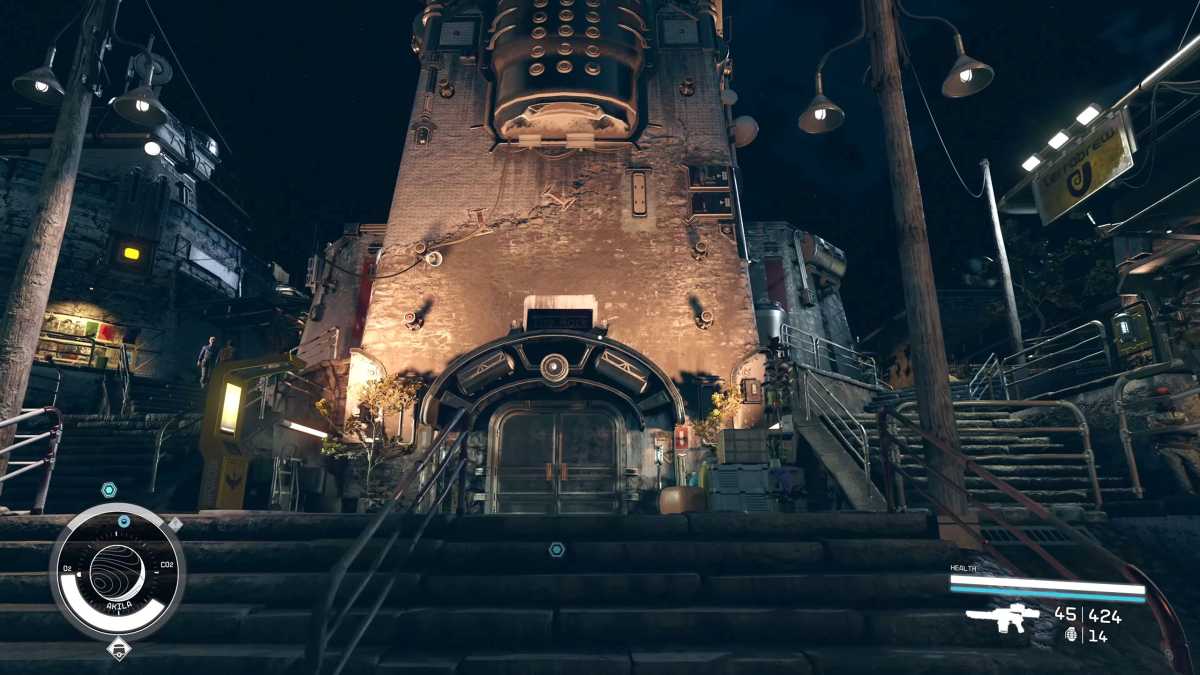
What really sets Starfield apart is that every location feels so authentic. A moment ago we were in New Atlantis, which is high-tech pure Apple chic. And now we’re in a Western steampunk town that’s also bursting with detail.
IDG
The Cowboy City is reminiscent of Star Wars Outlaws, where dusty Wild West flair meets high-tech, while New Atlantis could have been designed by Apple designer Jonathan Ive. Neon feels more like Cyberpunk 2077 — including countless restaurants, shops, boxing arenas, theatres, casinos, and a luxury flat on the upper decks, which we can move into if you have good relations with the drug cartels.
And then there are hundreds of outposts, moon bases, space stations, military bases, and research facilities, but also many surprises — such as a kind of holiday planet where you can book a hotel room and chill by the pool.
Starfield has an enormous number of RPG mechanics that interlock brilliantly
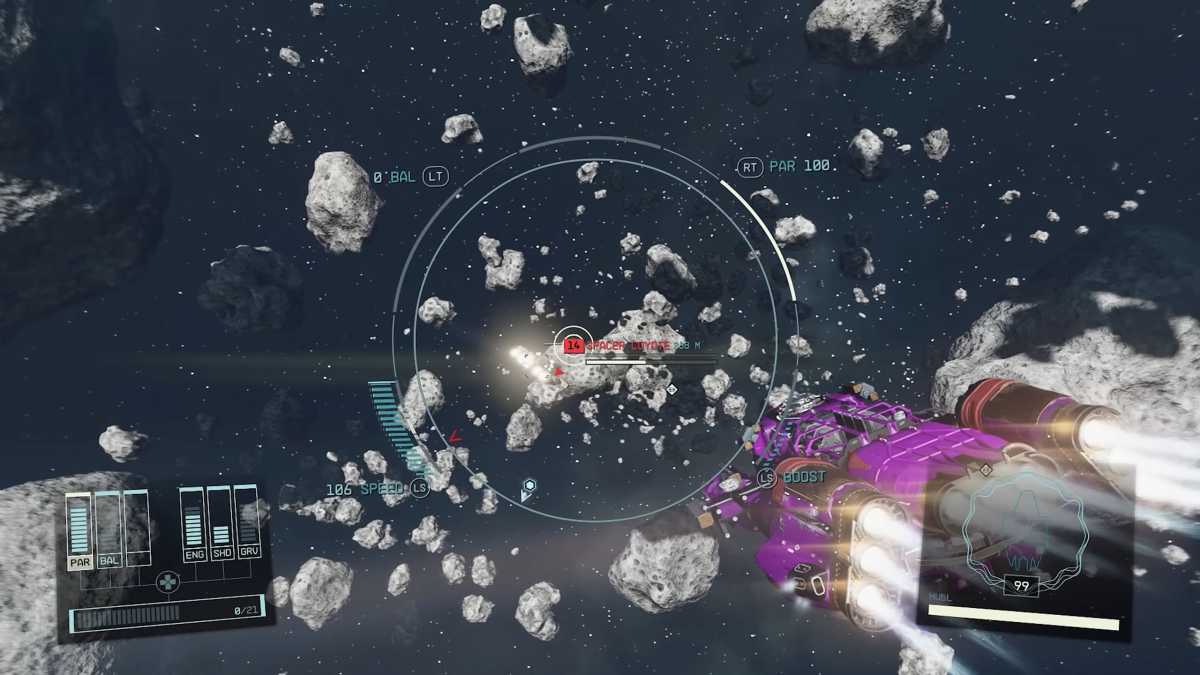
Not only is ship building super fun, it’s also heavily intertwined with our character’s skill. For example, we need to train attack techniques, engineering and piloting skills for larger models.
IDG
Starfield is a monster RPG. It has an enormous amount of mechanics on very many levels, but they’re smartly interwoven with the gameplay. There are five skill trees, each with 16 skills of their own, so around 80 core skills, each of which can be upgraded with 4 levels. It sounds overwhelming, but it is logically structured and self-explanatory in the game: You start as a pilot, for example, who can simply operate his on-board weapons. Over time, you unlock special skills that can, for example, target the grav drive of a freighter so that it cannot simply flee into hyperspace.

Pimp my Ride: There are countless different ways to create our very own spaceship with chrome colors, decals and all kinds of logos and decorations and equip it for special role-playing game types – for example with stealth cargo bays for smugglers.
IDG
Using a system reminiscent of VATS from Fallout, from you can target shields, drives, and individual weapon systems, to start boarding maneuvers. The skill levels are leveled up via challenges, such as a certain number of precise hits.
If you want to convert your ship, you need more engineering skills. If you want to mark enemies at long range at night with an infrared silhouette, you have to learn that particular weapon skill. There are skills to manage personnel as well — after all, you need a lot of crew for all your ships. By the way, you can equip each crew member individually with weapons and suits.

We can go cowboy, kill the mafia corpo here or play the diplomatic card if we’re skilled at it. All of this has effects that we often don’t feel until much later.
IDG
You can build complete science labs and analysis facilities into the ship to categorize resources right after you pick them up. That’s really what makes Starfield so fantastic: whatever you feel like doing, there’s a deep, thoughtful mechanic for it.
Fancy building a mining empire? Here are the tools. In the mood for smuggling? Hey, you’ve got some stealth cargo bays that aren’t picked up by New Atlantis’ scanners. Interested in expanding to a Vulcan planet? Your science division is developing new high-tech fibers that are heat resistant.
And as mentioned before, you don’t just have one ship, we have a whole fleet — and that’s just amazing. Starfield is the first game to live up to the infinite vastness of space.
This review was translated from German to English and originally appeared on pcwelt.de.
